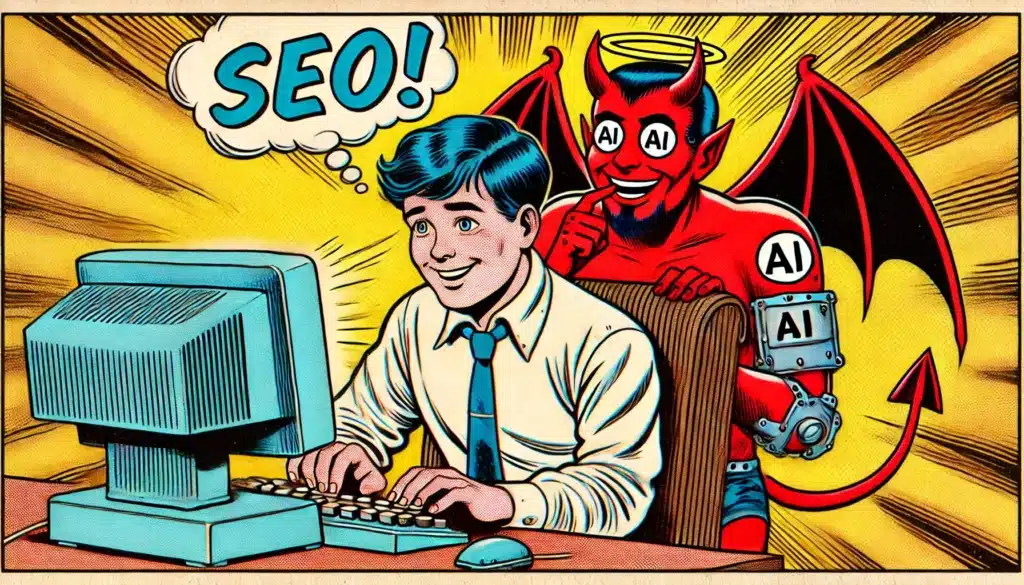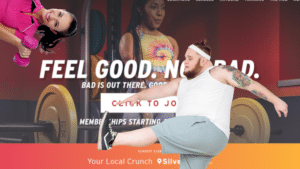4 Ways AI Can RUIN your SEO
As part of a web development team, we’re always hunting for the latest tech to up our game. Obviously, AI has made its way into our workflow, and honestly, it’s been a game-changer in a lot of ways. But let me tell you—if I wasn’t keeping a close eye on everything our automations were pumping…

As part of a web development team, we’re always hunting for the latest tech to up our game. Obviously, AI has made its way into our workflow, and honestly, it’s been a game-changer in a lot of ways. But let me tell you—if I wasn’t keeping a close eye on everything our automations were pumping out, we could’ve seriously tanked our SEO.
Here are the five things that almost ruined our SEO and how we saved ourselves:
1. Over-Optimization with AI-Generated Content
The Problem: AI tools are great at finding keywords, but here’s the thing—they don’t know when to take a step back and focus on what really matters: the reader. Over-optimization happens when you prioritize SEO-friendly tactics over creating genuinely helpful content. If you let AI run wild with keywords and don’t check the output, you’ll end up with robotic-sounding content that turns off both search engines and real people. And trust me, Google is way more interested in content that helps users than content that just screams “I’M OPTIMIZED!”
Example: Let’s say you’re trying to rank for “best running shoes,” and you tell your AI tool, “Write a 500-word article using the keyword ‘best running shoes’ at least 10 times.” You’ll probably end up with something like this:
“Looking for the best running shoes? Our guide on the best running shoes will help you find the best running shoes for your needs!”
Yikes. That’s keyword stuffing in its purest form, and it’ll be painfully obvious to both your readers and Google. Instead of feeling helped, users will feel like they’re reading a spammy sales pitch. And guess what? They’ll leave.
How to Avoid It: The real fix here is simple—focus on the reader first. Instead of telling your AI to stuff keywords into an article, give it instructions that put value at the forefront. A better prompt might be:
“Write a 500-word article on finding the best running shoes. Mention the keyword ‘best running shoes’ naturally a couple of times, and use related phrases. Most importantly, make sure the article genuinely helps someone who’s trying to decide on the right pair of shoes.”
Now, you’re creating content that prioritizes the reader’s needs. The keyword fits in organically, and the article actually offers useful advice. When users feel like they’re getting real value, they’ll stay longer, engage more, and—bonus—search engines will reward you for that.
2. Creating Low-Quality or Generic AI-Generated Content
The Problem: This one’s a biggie. AI can crank out a TON of content really fast, but it’s not always good content. Without some guidance, you’ll end up with basic, boring, “I’ve-seen-this-a-million-times” kind of stuff that no one cares about. And yeah, Google doesn’t care for it either. If people come to your site, read a couple of lines, and bounce, it’s a bad sign.
Example: Let’s say you want to create a blog post about “How to Start a Business.” You ask your AI tool to write a quick 500-word piece, and it spits out:
“To start a business, write a business plan, secure funding, register your business, and hire staff.”
Wow. Groundbreaking advice, right? The problem is, this same info is everywhere. It’s surface-level, generic, and won’t make anyone stick around for long.
How to Avoid It: The trick? Give your AI some personality and ask for specifics. Instead of a boring prompt, try:
“Write a 500-word article on how to start a business, but focus on the stuff people always forget, like handling taxes or setting up the right licenses. Bonus points if you give real-world examples.”
Now you’re adding value, and it feels like you know what you’re talking about (because you do).
3. Misunderstanding User Intent in AI-Driven SEO
The Problem: AI-driven SEO tools often get hyper-focused on search volume and competition levels. But here’s the thing: just because a keyword gets lots of hits doesn’t mean it’s the right keyword for what people actually want. Search intent is EVERYTHING—are they looking for info, trying to buy something, or just browsing around? AI doesn’t always pick up on those nuances.
Example: Let’s say your AI tool suggests optimizing for the keyword “best running shoes.” You set up a product page to sell running shoes, but people searching for “best running shoes” are actually looking for reviews and comparisons—not a direct purchase option. So, while you might get some hits, most visitors will leave quickly because your page doesn’t provide the reviews or comparisons they were expecting.
How to Avoid It: Before you go keyword-crazy, you gotta check out the search results and see what people are really after. If most of the results are reviews or comparison sites, maybe you should create a page that mixes product listings with honest reviews. The AI can help you find the keywords, but only you can figure out how to match them to what people actually want.
Key Insight: SEO isn’t a “one-and-done” thing. AI can help, but you need human insight to make sure it’s on point and meeting the real needs of your audience.
4. Believing that AI is ALWAYS Correct
The Problem: A lot of people think AI is this all-knowing genius, but let’s be real: it’s just regurgitating data it’s been trained on. It can sound confident, but it can also be totally wrong—sometimes in subtle ways that aren’t immediately obvious. When AI generates content, it might mix facts with outdated or just flat-out wrong info, which is a big no-no if you want to keep your SEO in good shape.
Example: Let’s say you ask AI to write something on investing in cryptocurrency. It might sound super convincing, but the advice could be outdated, or worse, bad. Your readers will catch onto that, and when they realize your info’s wrong, they’ll bounce—and your rankings will take a hit.
How to Avoid It: AI is great for getting ideas down, but you’ve gotta fact-check everything. Use AI to assist your research, not replace it. Always give the final say to an actual human who knows their stuff.
Key Insight: Don’t trust AI blindly. It’s a tool, not a replacement for good old-fashioned knowledge and research. Check everything, and keep your content legit.
In SEO, You Still Can’t Replace Humans with AI
AI is super powerful, but you’ve gotta be smart about how you use it. Sure, in a few months this article might not age well but from what I’ve seen over the past year and a half, AI hasn’t replaced my job. In fact, it’s only made me better at it. AI boosts my productivity, but at the end of the day, it’s the human experience, intuition, and empathy that make the real difference in SEO. AI’s here to help, not take over. (for now)








